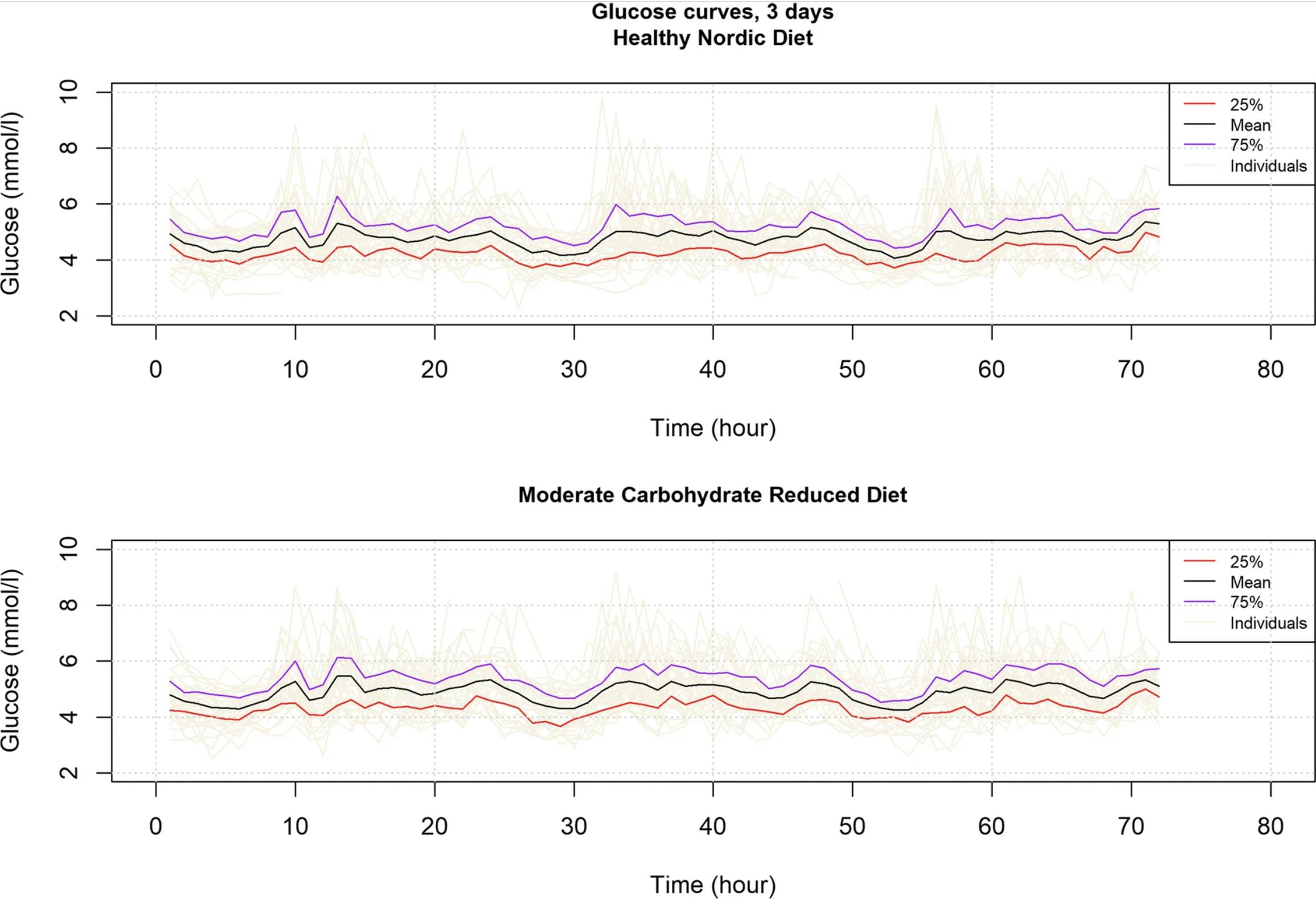As a member of Veri’s customer love team, Lisa T. M. has the answers for our customers. Responding to customer queries is a part of her job, but Lisa is uniquely qualified to support customers on their health and wellness journeys. Lisa has her Bachelor of Science in Rehabilitation Science and holds dual Master’s degrees in Exercise Physiology and Human Nutrition.
When she is not putting her education to use at Veri, Lisa is a scientist at Helsinki University Hospital (HUS), where she conducts clinical research in the fields of metabolic health and nutrition. Specifically, the treatment and management of gestational diabetes with dietary interventions.
Recently, Lisa’s work has been published in the peer-reviewed journal, BMC Nutrition [1]. The study investigated the effects of two different dietary patterns on glucose control and condition management in women with gestational diabetes. Continuous glucose monitors (CGMs) were used to collect glucose data from participants throughout the study.
Clinical research in metabolic health and gestational diabetes
Lisa’s pursuit of better health for herself and others has been her passion for quite some time. With her decade-long experience in research, Lisa’s work has helped to broaden the field of metabolic health and, as a result, has improved the health of many.
When she started out as a research assistant, she began in the field of public health, though her own experience with gestational diabetes motivated her to seek out research opportunities in studies focusing on metabolic health in pregnant populations.
Upon completion of her Master’s degree, Lisa did just that. In her most recent publication, Lisa and her team investigated the impact of different diets on women with gestational diabetes mellitus (GDM). Rates of GDM are on the rise, and, when the condition is not properly managed, it can lead to health problems for the mother and the baby.
GDM is a condition that occurs in pregnant women and is characterized by glucose intolerance of any degree. Pregnancy causes temporary insulin resistance and hyperinsulinemia, which can cause glucose intolerance around weeks 24-28 of pregnancy [2]. It affects up to 14% of pregnancies worldwide, depending on diagnostic criteria [3].
This condition, if developed, heightens the risk of high blood pressure, preterm delivery, cesarean delivery, and stillbirth. After birth, it can increase the maternal risk of developing cardiovascular disease and Type 2 diabetes and can increase the risk of impaired glucose tolerance and obesity in the child [4].
As such, it’s important to find a dietary plan for mothers with GDM to help them manage their condition and carry a healthy baby to term. Currently, there is no specific diet recommendation for GDM. Rather, general advice, like limiting added sugar, spreading carbohydrates across meals, and working with a dietitian is recommended for patients who have GDM [5].
Lisa’s study investigated and compared the effects of the plant-based Nordic diet and a carbohydrate-restricted diet in women with GDM. The study looked at the effects of these diets on glucose levels across a two-week period using CGMs to monitor their blood glucose levels.
Study goals and methods
This study recruited women who had been diagnosed with GDM, lived in Helsinki, and were between weeks 24 - 29 gestation.
The trial was a randomized crossover design, where participants acted as their own control group. Participants began their CGMs, and for the first four days of the sensor, they ate normally. They were then randomly assigned to one of the two diet conditions (Nordic or carbohydrate-restricted), which they ate for 3 days. They then had a 3-day washout period, where they ate their normal diet, then 3 more days of eating the second diet. All meals were provided during the intervention period. Blood tests were taken before and after each dietary intervention.
While there has been other research on nutrition for GDM, this study was the first of its kind in several ways. It was novel in its use of the healthy Nordic diet with an emphasis on plant-based protein sources.
The Nordic diet can be compared to the Mediterranean diet in that it is high in plants but with Nordic ingredients like forest berries, barley, rye grains, fish, fermented milk products, and Nordic species of fruit and vegetables. In the case of this study, Lisa and her team modified the Nordic diet to emphasize reducing or removing meat and replacing it with plant-based sources of protein, like locally grown legumes.
Another novelty of this study was the use of CGMs to monitor participant glucose levels. Initially, this was not often used in diet studies of GDM when the planning of this project took place but has recently started to become a more frequently used method in GDM research.
This publication covers the initial phase of a longer study, of which the diet intervention was just the beginning. The women in this study continued to follow the intervention diet all the way until the baby was born. The long-term effects of the diet intervention for the mother and the baby will be measured and evaluated. Lisa is currently working on this part of the study.
Study results
The primary outcome being evaluated was time in range, or how much of the time participants’ glucose levels were within a healthy range (70 - 140mg/dL; 3.9 - 7.8 mmol/L).

Overall, there was no significant difference between the two diets when it came to time in range, and in both diet cases, the average glucose and variability were low.
This study revealed that, in the short term, a well-planned diet can help women with GDM keep their glucose in a healthy range that supports a safe pregnancy. Importantly, it showed that there is room for vegetarian diets, which can be higher in carbohydrates when trying to achieve tighter glucose ranges. The Nordic diet gave participants 1kg of fruits, vegetables, and berries each day, further suggesting that carbohydrates from fruits and vegetables can support healthy glucose ranges for this population.
The big picture
This study is a first step towards better understanding and treating GDM, and ultimately ensuring healthy pregnancies, births, and infant health outcomes.
The takeaway from this study is that with some careful and mindful planning, it is possible to eat and enjoy carbohydrates and still have healthy glucose control. This study suggests that it’s the source of carbohydrates (fruits, vegetables, whole grains) that makes a difference, especially when balanced with healthy fats and lean protein.
Lisa’s research and position at Veri allow her to help others who have metabolic health concerns. It also highlights the many ways that CGMs, coupled with education and guidance, can be so impactful for health and wellbeing– whether it be managing a surprising diagnosis, losing weight, or reversing insulin resistance. Whatever the case may be, tapping into your body’s signals with a CGM, and learning more about how you can support your unique biology with the help of the Veri app (and our customer love team) can help you make lasting habit changes for better health.
Takeaways
- Lisa’s study investigated the effects of different diets in women with GDM on their blood glucose levels. She found that with both diets (the healthy Nordic diet and a moderate carbohydrate diet), glucose time in range, average glucose, and variability were all low.
- For women with GDM, the healthy Nordic diet — which consisted of plant-based Nordic ingredients like forest berries, barley, rye grains, fish, fermented milk products, and Nordic species of fruit and vegetables — resulted in lower average blood glucose.
- The results of the study show that the source of carbohydrates is important, and choosing healthy, whole-food, fiber-rich carbohydrate sources can help keep glucose in range and well-managed.
DISCLAIMER: The Veri app is not intended for the treatment of GDM or any medical condition. This article serves to highlight advances in the field of medicine, Lisa’s research, and the importance of a well-rounded diet.
References:
- https://bmcnutr.biomedcentral.com/articles/10.1186/s40795-023-00744-7
- https://www.ncbi.nlm.nih.gov/pmc/articles/PMC3406210/
- https://pubmed.ncbi.nlm.nih.gov/12017686/
- https://www.ncbi.nlm.nih.gov/pmc/articles/PMC2990903/
- https://www.ucsfhealth.org/education/dietary-recommendations-for-gestational-diabetes


